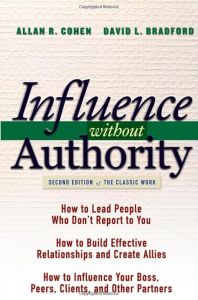Join getAbstract to access the summary!

Join getAbstract to access the summary!
Allan R. Cohen and David L. Bradford
Influence without Authority
Wiley, 2005
What's inside?
To exercise influence above and beyond your power, learn what people want and swap it for their compliant cooperation.
Recommendation
This excellent leadership guide by Allan R. Cohen and David L. Bradford offers a classic, necessary set of prescriptions for anyone working in a flat, team-based organization. That is to say, it is a guide that will prove useful to almost everybody employed at a contemporary organization. The waning of the old hierarchical organization, with its clear lines of authority and control-command management styles, puts a greater emphasis on your individual ability to achieve your goals by enlisting support from people who, often, have no obligation to provide it. getAbstract recommends this clear, jargon-free outline of the basic principles you need to know to influence others, even if you lack sufficient authority.
Summary
About the Authors
Allan R. Cohen is a distinguished professor of global leadership and Director of Corporate Entrepreneurship at Babson College. David L. Bradford is a senior lecturer on organizational behavior at the Stanford University Graduate School of Business and Director of Stanford’s Executive Program in Leadership. They are the co-authors of Managing for Excellence and Power Up.

















Comment on this summary